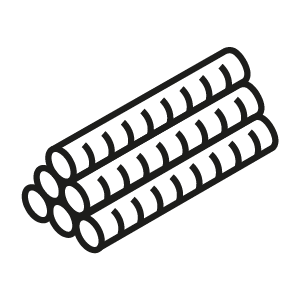Metal applications in the aerospace industry are critical due to the demanding requirements of strength, weight, durability, and resistance to extreme conditions. Here are the key metals and their applications in aerospace:

1. Aluminum & Aluminum Alloys
- Applications: Aircraft frames, wings, fuselage, and skin panels.
- Advantages: Lightweight, corrosion-resistant, and cost-effective.
- Common Alloys:
- 2024-T3 (high strength, used in wings and fuselage).
- 7075-T6 (high strength-to-weight ratio, used in structural components).

2. Titanium & Titanium Alloys
- Applications: Jet engines, landing gear, fasteners, and high-stress airframe components.
- Advantages: High strength-to-weight ratio, excellent corrosion resistance, and high-temperature performance.
- Common Alloys:
- Ti-6Al-4V (most widely used in aerospace for engine and airframe parts).

3. Steel & Stainless Steel
- Applications: Landing gear, engine mounts, and high-stress structural components.
- Advantages: High strength, durability, and fatigue resistance.
- Types Used:
- Stainless Steel (AISI 304, 316) – Corrosion-resistant parts.
- High-Strength Low-Alloy (HSLA) Steel – Used in critical load-bearing structures.

4. Nickel-Based Superalloys
- Applications: Turbine blades, exhaust systems, and combustion chambers in jet engines.
- Advantages: Retain strength at high temperatures (up to 1,200°C), oxidation-resistant.
- Common Alloys:
- Inconel 718 (used in jet engines and rocket motors).
- Hastelloy X (used in afterburners and combustors).

5. Magnesium Alloys
- Applications: Gearboxes, interior components, and engine casings.
- Advantages: Extremely lightweight but less corrosion-resistant (often requires coatings).
- Common Alloy: AZ91D (used in non-critical structural parts).

6. Advanced & Emerging Metal Applications
- Metal Matrix Composites (MMCs): Aluminum reinforced with silicon carbide (SiC) for stronger, lighter components.
- Additive Manufacturing (3D Printing): Titanium and nickel alloys used for complex, lightweight engine parts.
Key Trends in Aerospace Metals
- Weight Reduction: Increased use of titanium and composites to replace steel.
- High-Temperature Performance: Nickel superalloys for next-gen jet engines.
- Sustainability: Recycling aluminum and titanium to reduce environmental impact.









Add comment